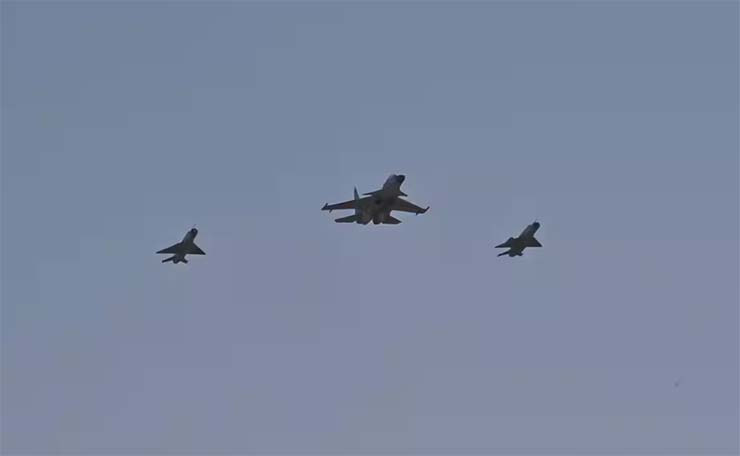
New Delhi: Signifying the closure of an era and embodying the ongoing transformation within the Indian Air Force (IAF), the MiG-21 Bison aircraft made their farewell appearance in the skies above Uttarlai, Barmer district, Rajasthan on October 31, 2023. It marked a pivotal moment in aviation history. The MiG-21 Bison gracefully shared the airspace with the Su-30 MKI for decades.
The retirement of the MiG-21 Bison paves the way for India’s indigenous Light Combat Aircraft (LCA) Mark-1A jets, a careful plan to systematically phase out these aging aircraft, which currently number around 50 across three squadrons. The farewell ceremony saw the presence of personnel from all three services.
Affectionately known as “OORIALS,” the MiG-21 Squadron dutifully served the nation for roughly six decades, making substantial contributions to wartime efforts during Indo-Pak conflicts. Having operated the MiG-21 since 1966, the OORIALS squadron now embarks on a transition, replacing their trusty aircraft with the state-of-the-art Sukhoi-30 MKI. This transition underscores the resolute commitment of the IAF to modernise and safeguard the nation’s skies. The transition of the MiG-21 Bison Sqn, stationed at Air Force Station Utarlai, onto the Su-30MKI fighter, was commemorated during a ceremony at the Air Force Station.
The town of Uttarlai in Barmer, Rajasthan bore witness to a historic moment on October 31, as the MiG-21 Bison fighter aircraft of the Indian Air Force’s No. 4 squadron, which had been a stalwart presence in the service for many years, took its final flight. This flight not only marked the conclusion of an era but also epitomised the ongoing evolution within the Indian Air Force.
Shedding light on this transition, Air Chief Marshal VR Chaudhary outlined the IAF’s intention to completely retire the MiG-21s by 2024, with the LCA Mark-1A set to fill the void left by their departure.
The MiG-21s have played a central role in bolstering India’s aerial combat capabilities, with nearly 870 of these fighters acquired by the IAF in the early 1960s. Yet, the aircraft’s service history has been tarnished by safety concerns.
As the MiG-21 Bison took its final bow, on X, users expressed their sentiments, with one individual reflecting on the MiG-21’s historical significance: “MiG-21, once a formidable fighter plane in the ’70s, is retiring. It played a pivotal role during the 1971 war, bombarding many Pakistani cities. Everything has its time. Tejas will replace the MiG fleet with more advanced capabilities.”
The retirement of the MiG-21 Bison stands as a symbol of the IAF’s voyage towards modernisation and its unwavering commitment to embrace cutting-edge indigenous aircraft technology for the defence of the nation.









